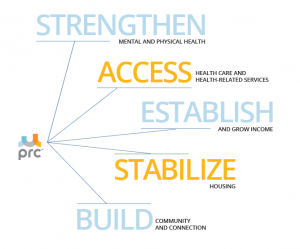U = U means undetectable equals untransmittable. This slogan refers to the fact that there is effectively no risk of sexually transmitting HIV when the virus is reduced to undetectable levels.
An undetectable viral load for people living with HIV means they will not transmit HIV to their partners. Active engagement in treatment as prevention is a key to maintaining an undetectable viral load and preventing HIV transmission. ‘Treatment as Prevention’ (TasP) is defined as any HIV prevention method that uses antiretroviral therapy (ART) to decrease the risk of HIV transmission to a sexual or needle-sharing partner. ART reduces HIV in blood, semen, vaginal fluid, and rectal fluid to very low levels, and as a result, lowers HIV transmission. ART can even lower viral load to undetectable levels.
Evidence from real-world studies including PARTNER and Opposites Attract shows the affect TasP and ART have on preventing HIV transmission in the PARTNER study that there were ZERO transmissions out of 58,000 condomless sex acts between people with undetectable HIV viral loads and their HIV-negative partners. In the Opposites Attract study, there were no transmissions out of 17,000 condomless sex acts between men. Since the advent of combination therapy, there have been no confirmed reports of anyone with an undetectable viral load sexually transmitting HIV.
An important aspect to TasP is regular viral load testing. Testing is recommended about 2-4 times a year for people who have a stable undetectable viral load. More frequent testing may be necessary and it is recommended that people speak with their doctors about appropriate care, treatment, and testing.
Evidence shows that with regular testing and continued treatment, people living with undetectable HIV viral loads may let go of fears about transmitting HIV to their partners. Instead, we can all focus on the fact undetectable does equal untransmitable.
References:
Cohen MS, Chen YQ, McCauley M, et al. Antiretroviral therapy for the prevention of HIV-1 Transmission. New England Journal of Medicine. 2016;0(July 18):1-10. http://www.nejm.org/doi/full/10.1056/NEJMoa1600693#t=article
Del Romero J, Castilla J, Hernando V, Rodríguez C, García S. Combined antiretroviral treatment and heterosexual transmission of HIV-1: cross sectional and prospective cohort study. British Medical Journal. 2010;340:c2205. http://www.bmj.com/content/bmj/340/bmj.c2205.full.pdf
Frieden TR, Foti KE, Mermin J. Applying Public Health Principles to the HIV Epidemic—How Are We Doing? New England Journal of Medicine. 2015;373(23):2281-2287. http://www.nejm.org/doi/full/10.1056/NEJMms1513641#t=article
i-Base. Q&A on the PARTNER study: how to interpret the zero transmission results. 2016; http://i-base.info/qa-on-the-partner-study/. Accessed 07/18/2016.
Loutfy M, Tyndall M, Baril J-G, Montaner JS, Kaul R, Hankins C. Canadian consensus statement on HIV and its transmission in the context of criminal law. Canadian Journal of Infectious Diseases and Medical Microbiology. 2014;25(3):135-140. http://www.hivlawandpolicy.org/resources/canadian-consensus-statement-hiv-and-its-transmission-context-criminal-law-mona-loutfy
Loutfy MR, Wu W, Letchumanan M, et al. Systematic review of HIV transmission between heterosexual serodiscordant couples where the HIV-positive partner is fully suppressed on antiretroviral therapy. PloS one. 2013;8(2):e55747. http://journals.plos.org/plosone/article?id=10.1371/journal.pone.0055747
Rodger AJ, Cambiano V, Bruun T, et al. Sexual activity without condoms and risk of HIV transmission in serodifferent couples when the HIV-positive partner is using suppressive antiretroviral therapy. Journal of the American Medical Association. 2016;316(2):171-181. http://jama.jamanetwork.com/article.aspx?articleid=2533066
Vernazza P. HIV-infizierte Menschen ohne andere STD sind unter wirksamer antiretroviraler Therapie sexuell nicht infektiös. 2008. http://www.aids.ch/de/downloads/pdfs/EKAF-Statment_2008-05-089.pdf
Vernazza PL, Bernard EJ. HIV is not transmitted under fully suppressive therapy: The Swiss Statement – eight years later Swiss Med Weekly 2016; http://bit.ly/SwissMedWeekly Accessed Sept. 4, 2016, 146.


